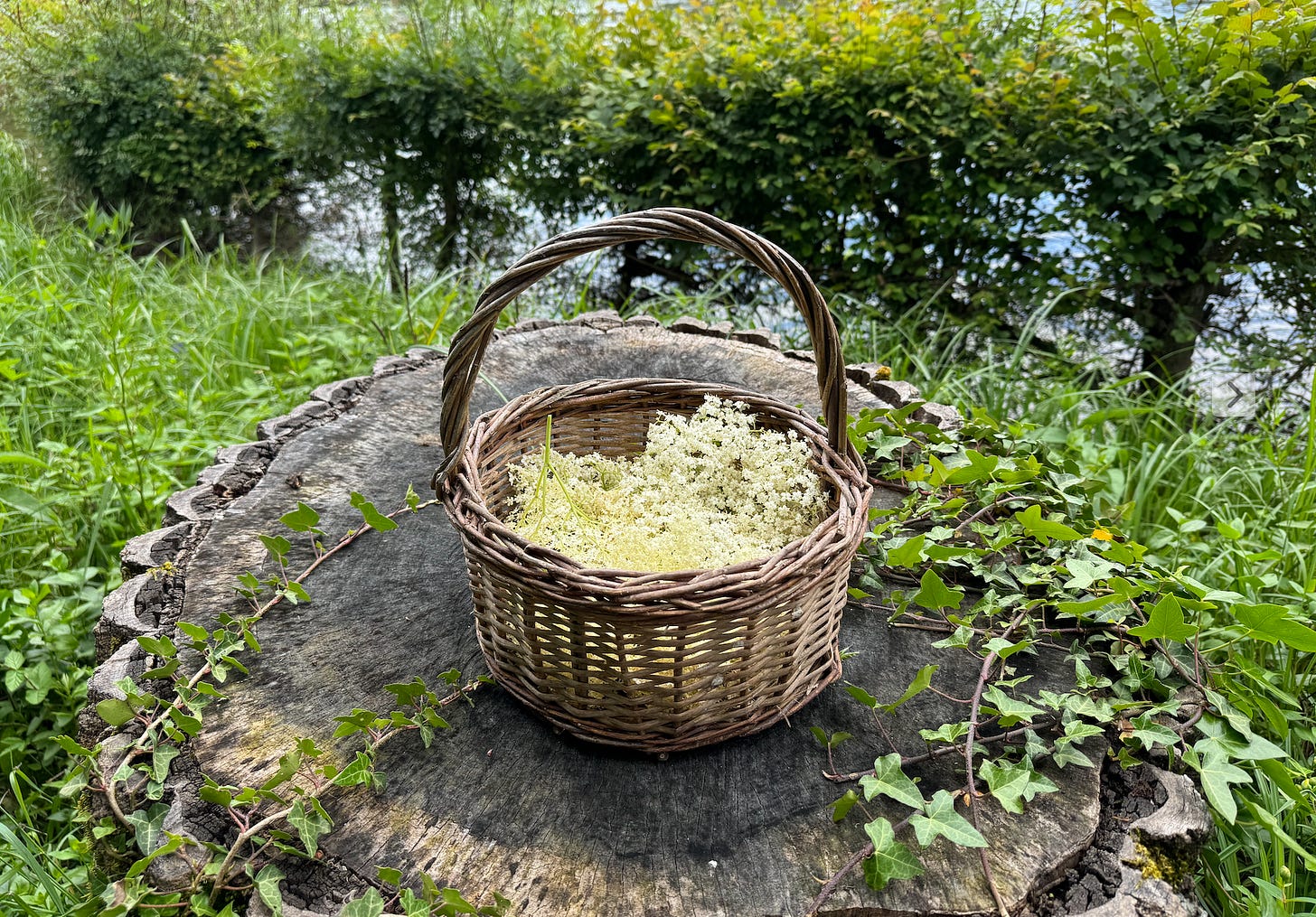Prior to going somewhere new, it’s natural to romanticize it - for me, my idea of England was a pastel garden party, with St Germain elderflower gin and tonics flowing and cucumber sandwiches on every table. Turns out, I was sliiiiightly off; however, the elderflower craze there was and is real. The best part? Elderflower is so incredibly common you can find some growing freely on nearly every other street come late spring early summer.
My friend
and I were on a long sunny walk in London the other day and every corner we turned, we’d get hit with the sweet smell of elderflower. We then devised a delicious master plan - I’d make elderflower jelly, she’d make a floating island (ile flottante) and together, they’d rule the late spring dessert world.Stay tuned for Nicola’s recipe coming this Sunday! And if you haven’t already checked it out, her wonderful book, SIFT, is out now. If you’d like to improve your baking or want to better understand why and how things bake, this is the book for you!
The Elder Tree
In ancient times, the elder tree was highly revered in Northern Europe as it was considered a gift from Mother Earth. While its berries and flowers were seen as magical, the tree itself was considered to be home to nature spirits so it was of equal importance. It was common to place parts of the tree (flowers, leaves, twigs) on oneself or in one’s home for protection and wine was even made from the berries. This wine, elder wine, was even thought to induce psychic vision…
Like most beautiful things, the elder tree can be dangerous - its leaves, stems, bark and roots are all slightly toxic! Don’t let this scare you away, just be sure to properly pluck off every flower or berry when using either in a recipe. Oh, and I should probably mention that raw elderberry is also poisonous… it contains a cyanogenic glycoside called sambunigrin, also found in apple seeds, which is toxic if eaten in high doses. That’s the beautify of jam, pie, and crumble - they’re cooked (and delicious)!
 Tiktok failed to load.
Tiktok failed to load.Enable 3rd party cookies or use another browser
Elderberry
In France, elderberry is more popular than elderflower. Also known as sambucus, this little antioxidant-packed berry supposedly helps you relax, boosts your immune system, is good for your heart and eases any flare-ups or inflammation in the body. When the flowers appear in late spring, sure they’re enjoyed, but most wait around for these to become berries later in the summer. The berries have a stronger flavor than the flowers - the initial taste is woody, earthy, and almost reminiscent of oolong tea but once cooked, the fruity litchi sweetness comes out to flirt with your tastebuds.
Elderflower
Elderflowers are teeny tiny, cute white flowers that grow like umbrellas. Each little stem that offshoots the main stem is even called an umbel! The best time to harvest them when making jam is when the flowers are fully formed, they give off a bit of pollen to the touch, but don’t smell like cat pee. Yes… older elderflower starts giving off quite an unpleasant smell, which many English people have described (correctly may I say) as “cat wee”.
The smell and taste of elderflower is extremely similar to lychee, it’s delicate, not too floral and somewhat fruity. It’s also reminiscent of a very buttery pear in prime season. As you may know if you’re not new here, I’m not a fan of floral flavors as they taste like soap to me. I do, however, love orange blossom and elderflower because these give off an herby, grassy, fresh taste.
Some of my favorite pairings for it include:
Elderflower + apricot (jam and/or tarte coming your way later this week)
Elderflower + gooseberry
Elderflower + lime
Elderflower + blackberry
Elderflower + basil
Elderflower + lemongrass
Elderflower + ginger
Elderflower + coconut
Elderflower + vanilla bean
Because these teensy white flowers can be used dried and fresh, there are numerous simple ways in which to use this flower ranging from tea and cordial to cakes and jelly. Today, we’re making jelly.
The Recipe
Makes 4 jars









